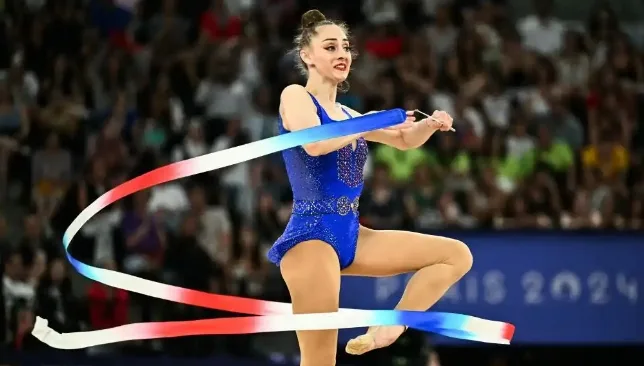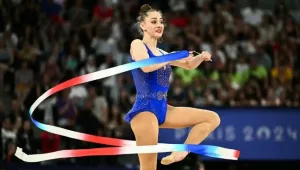
Rhythmic gymnastics: Three historic medals for Germany, Bulgaria and Italy…

Rhythmic gymnastics, an exquisite blend of grace, flexibility, and coordination, has seen remarkable achievements over the years.
Among the standout moments are three historic medal wins by Germany, Bulgaria, and Italy, each reflecting the nation’s prowess and dedication to this elegant sport.
**Germany: A Legacy of Precision and Elegance**
Germany has made its mark in rhythmic gymnastics with a tradition of precision and artistic excellence.
The country first gained significant attention in this field in the early 2000s.
One of the most notable achievements was during the 2004 Athens Olympics, where Germany won its first rhythmic gymnastics medal.
The German team, led by the remarkable gymnast Anna Bezsov, earned a bronze in the group all-around competition.
Their performance was a testament to Germany’s rigorous training programs and emphasis on technical perfection.
Bezsova, known for her impeccable routines and fluid movements, showcased the German style of rhythmic gymnastics: meticulous, disciplined, and artistically refined.
**Bulgaria: Dominance and Innovation**
Bulgaria’s rhythmic gymnastics history is marked by dominance and innovation, especially during the late 20 and early 21st centuries.
The pinnacle of Bulgarian success came in 1984 during the Los Angeles Olympics.
The Bulgarian team, under the guidance of the esteemed coach, Neshka Robeva, clinched the gold medal in the group all-around competition.
This victory was a culmination of years of rigorous training and strategic innovation in routines and choreography.
Bulgarian gymnasts are renowned for their incredible flexibility, strength, and the seamless integration of apparatus handling with intricate dance movements.
The 1984 win not only underscored Bulgaria’s superiority in the sport but also set new standards for rhythmic gymnastics routines, influencing the global approach to the sport.
**Italy: A Renaissance of Rhythmic Gymnastics**
Italy’s rise in rhythmic gymnastics is relatively recent, with the country making a dramatic impact in the early 2000s.
The landmark achievement came in the 2008 Beijing Olympics, where Italy secured a silver medal in the team all-around competition.
The Italian team’s performance was characterized by its vibrant choreography and dynamic routines, reflecting Italy’s flair for blending artistic expression with athletic prowess.
The success in Beijing was a product of meticulous preparation and innovative choreography, led by coach Emanuela Maccarani, who played a crucial role in shaping the team’s routines.
The Italian gymnasts, known for their spirited performances and captivating stage presence, demonstrated Italy’s ability to integrate artistic sophistication with technical skill.
**Conclusion**
The rhythmic gymnastics achievements of Germany, Bulgaria, and Italy highlight the global nature of the sport and the diverse approaches to excellence.
Germany’s emphasis on precision, Bulgaria’s innovative dominance, and Italy’s artistic renaissance each contribute to the rich tapestry of rhythmic gymnastics.
These historic medals not only represent the individual success of these nations but also reflect the evolution and global appreciation of rhythmic gymnastics as a sport that celebrates grace, discipline, and artistic creativity.







